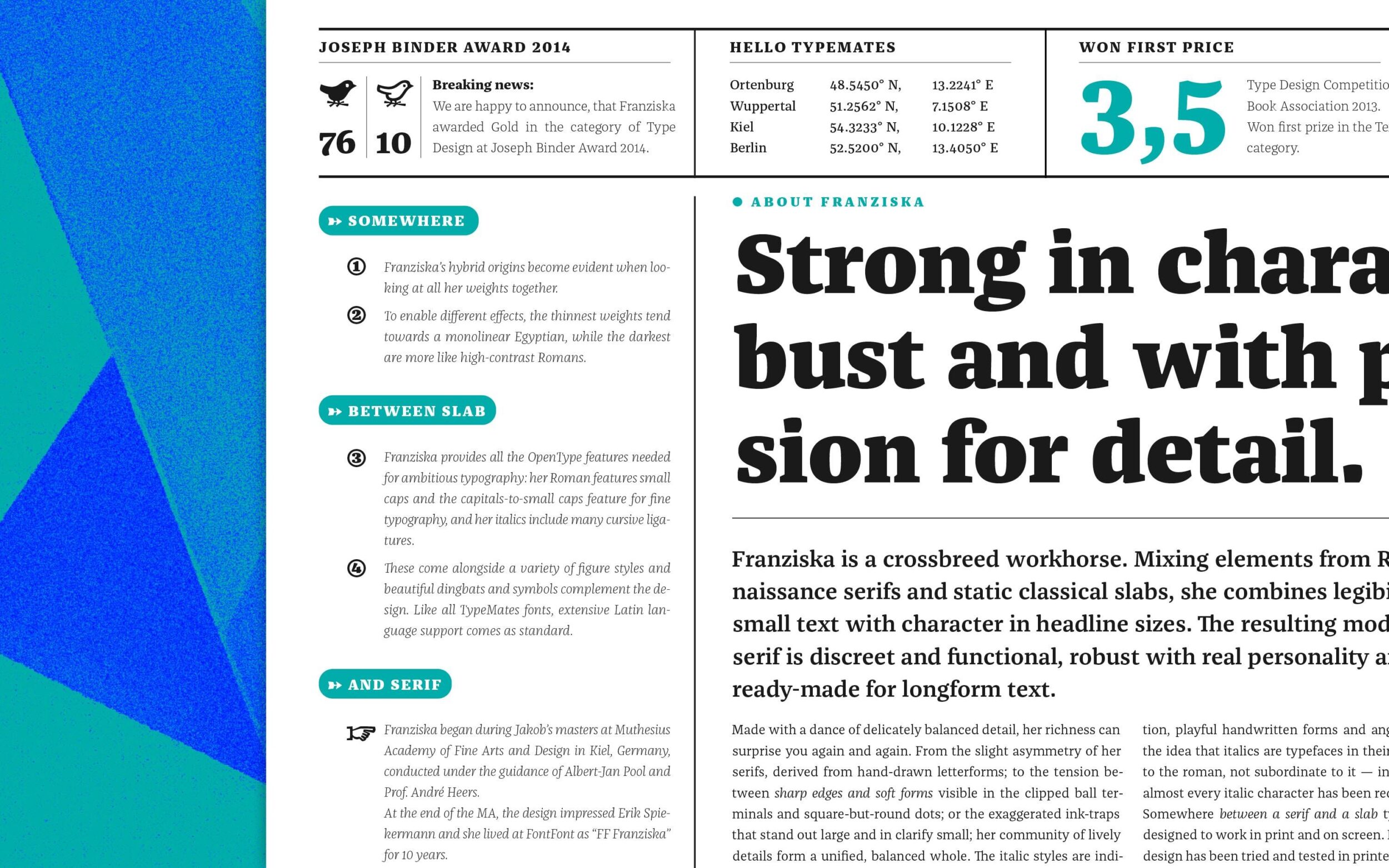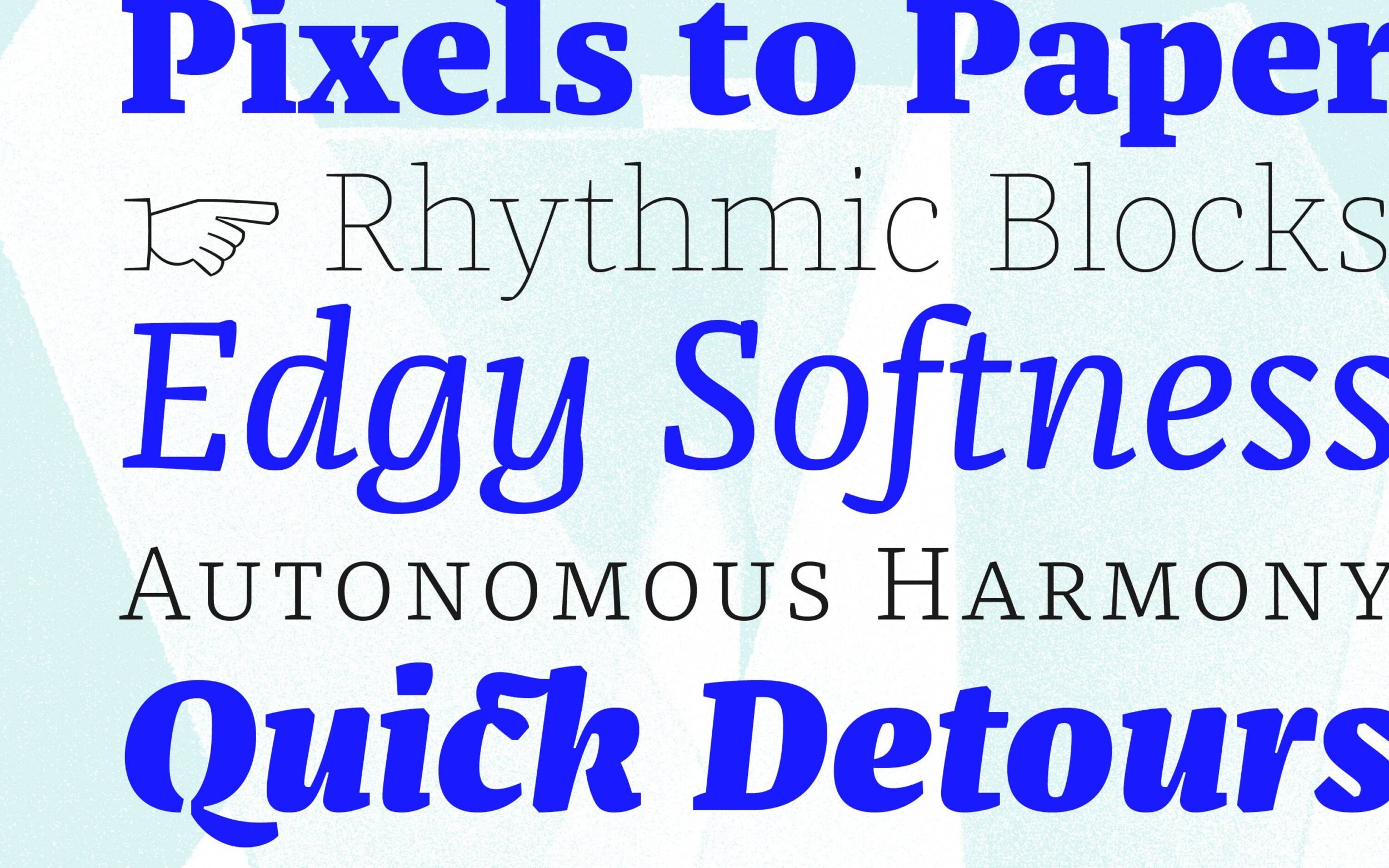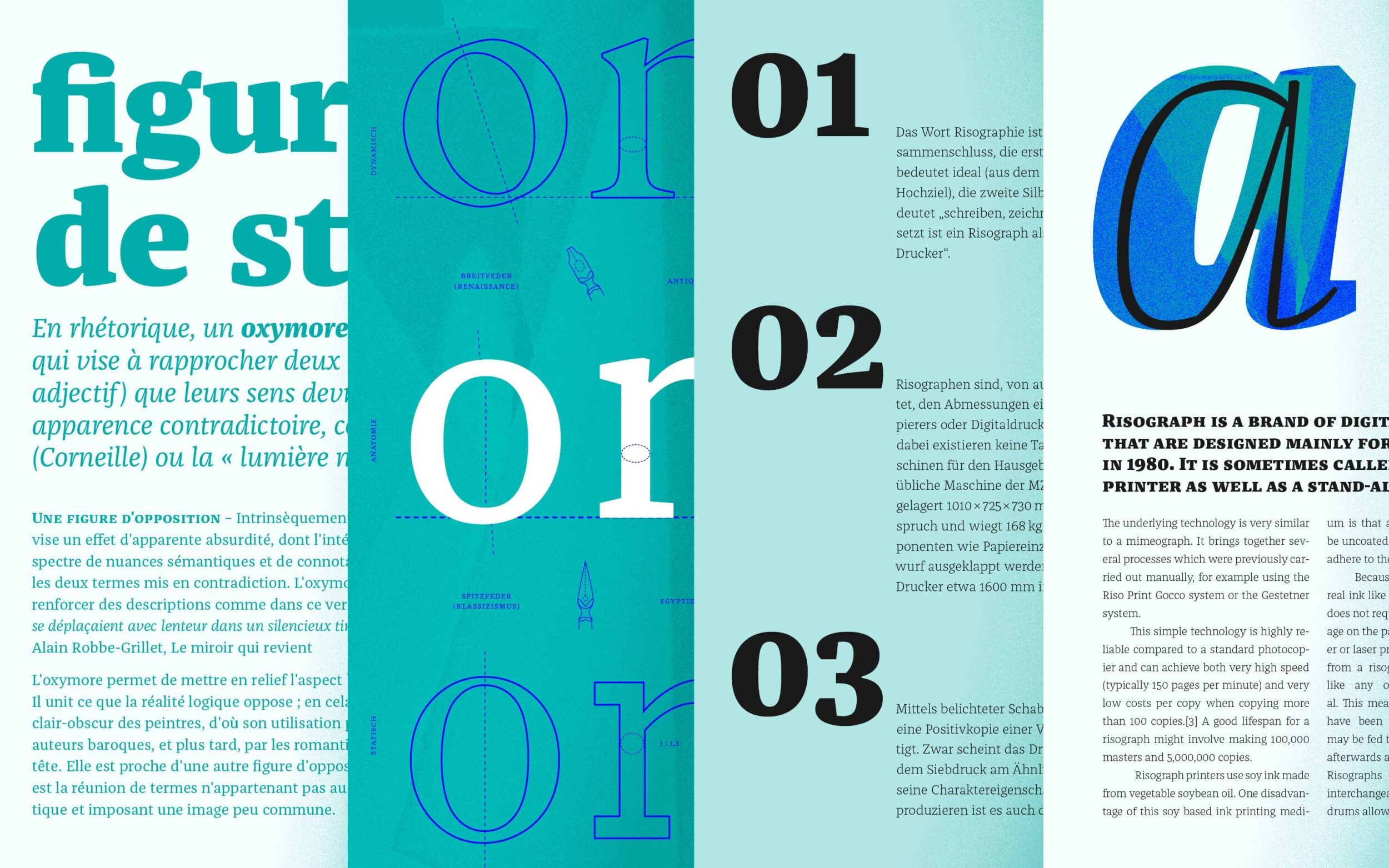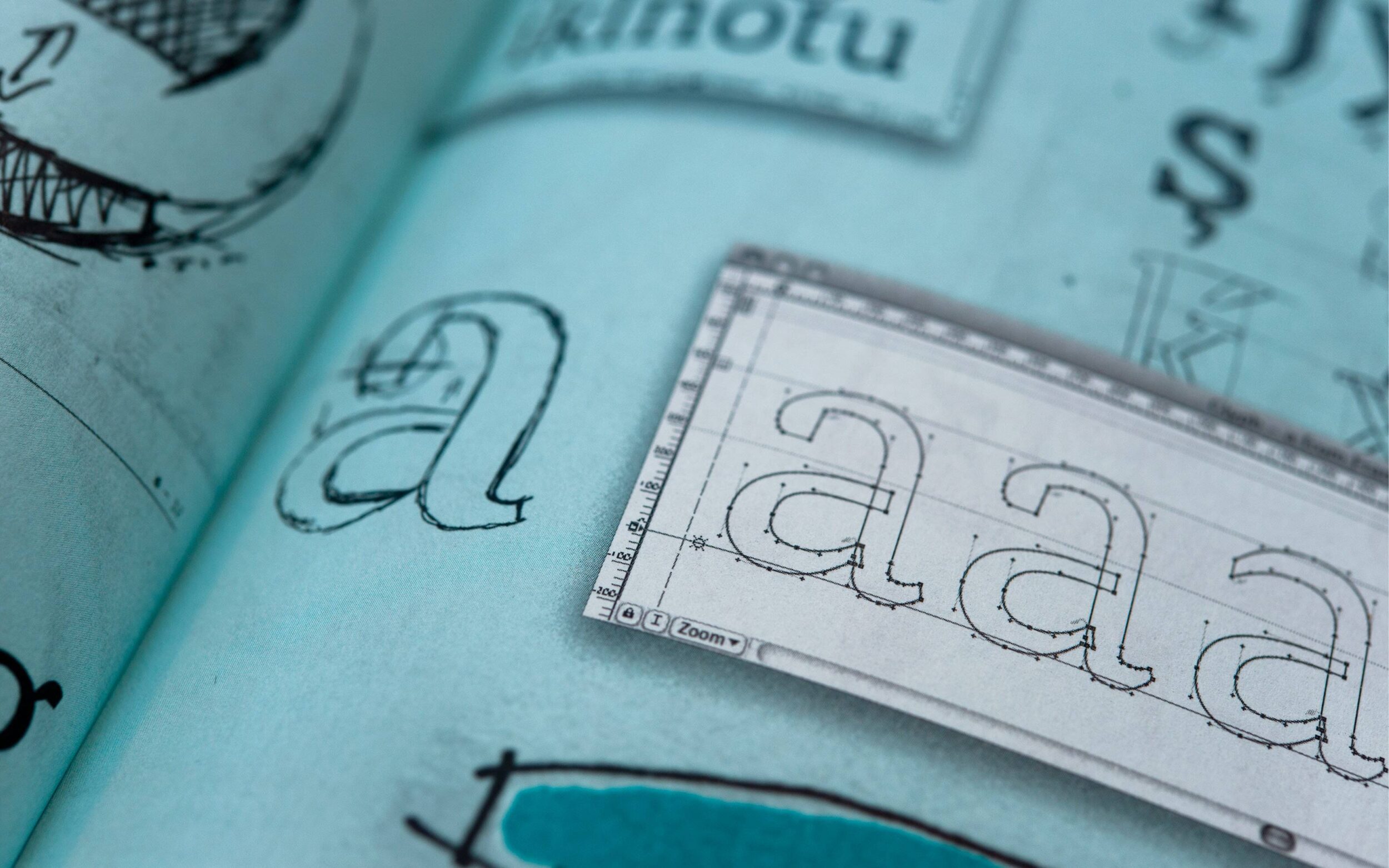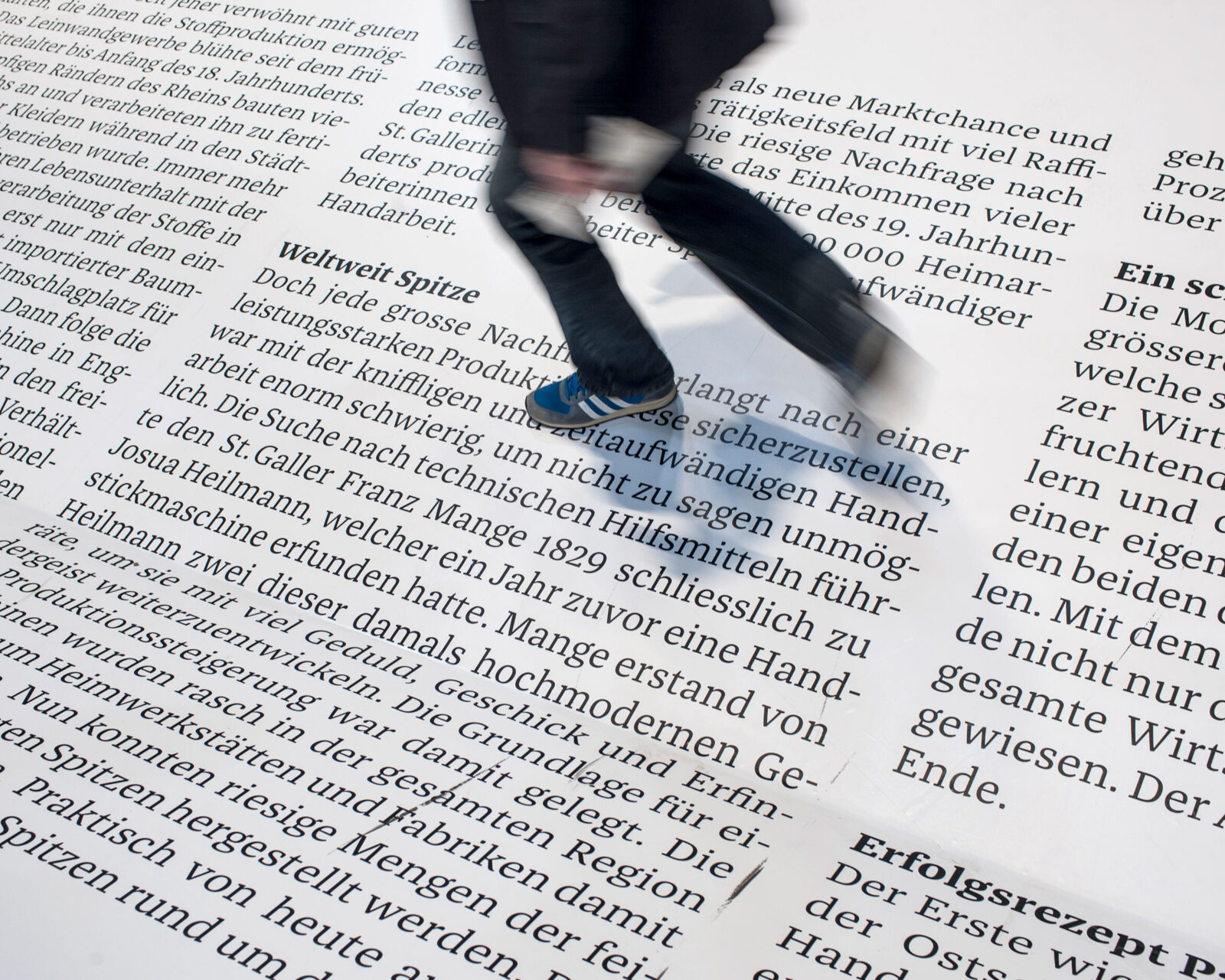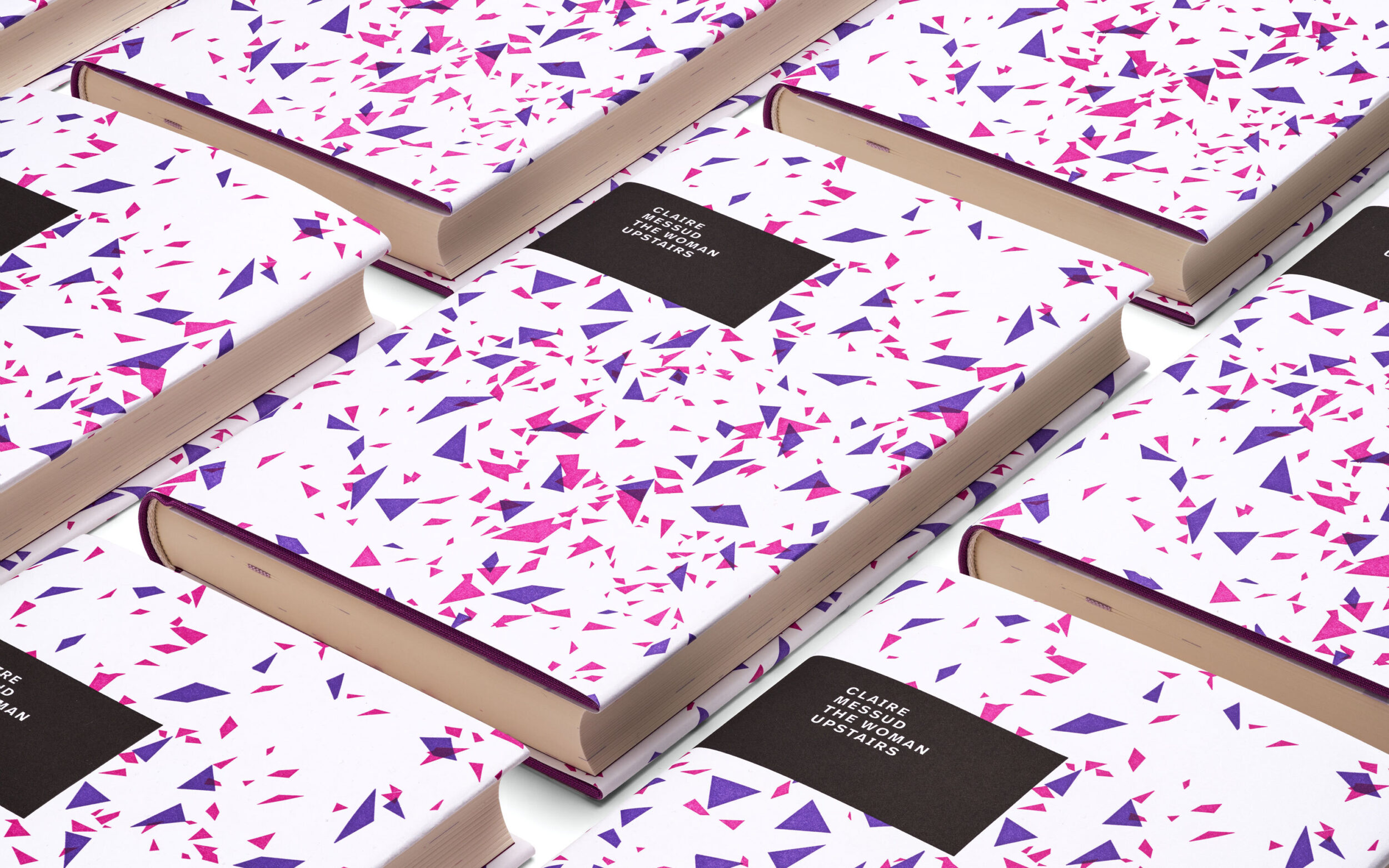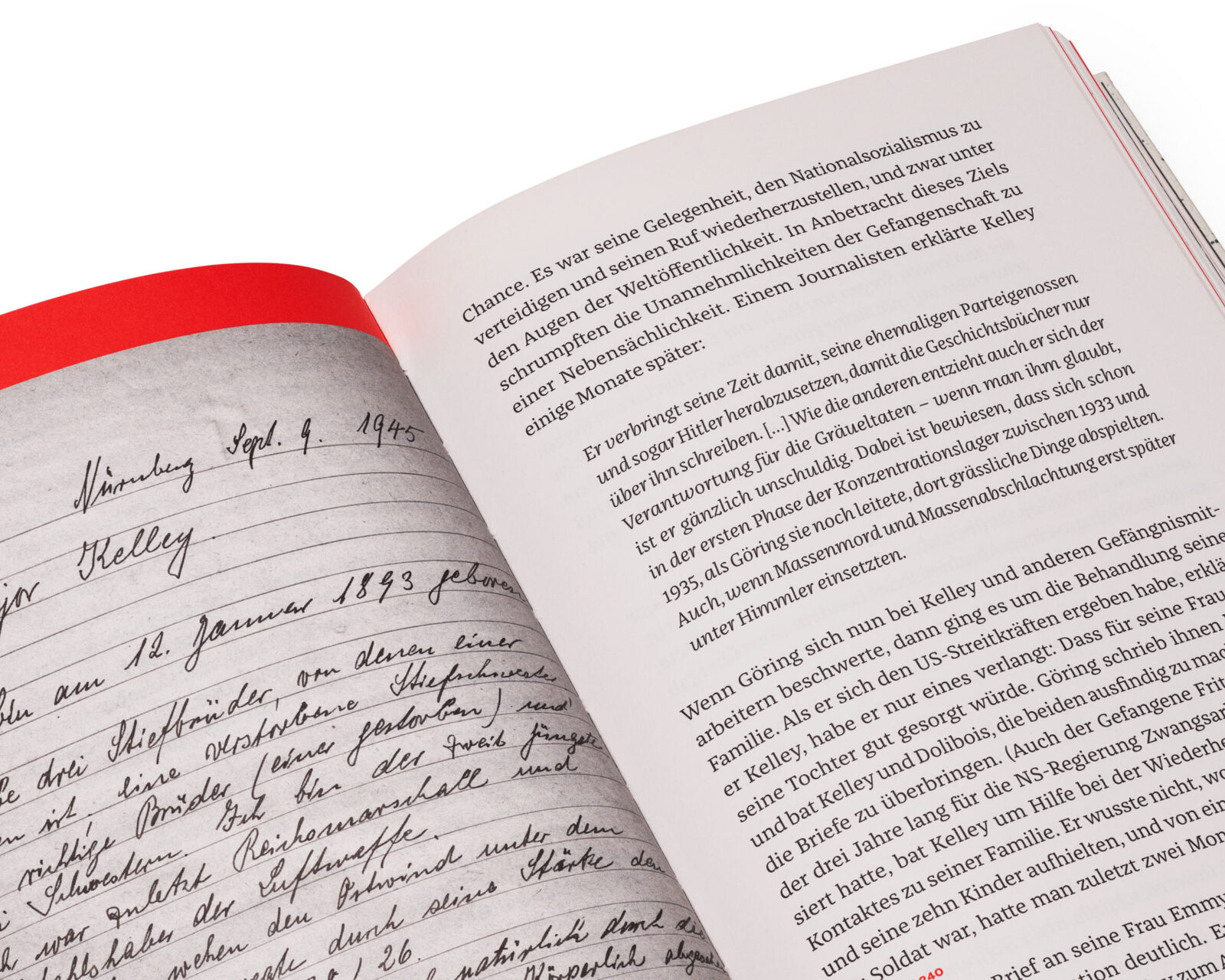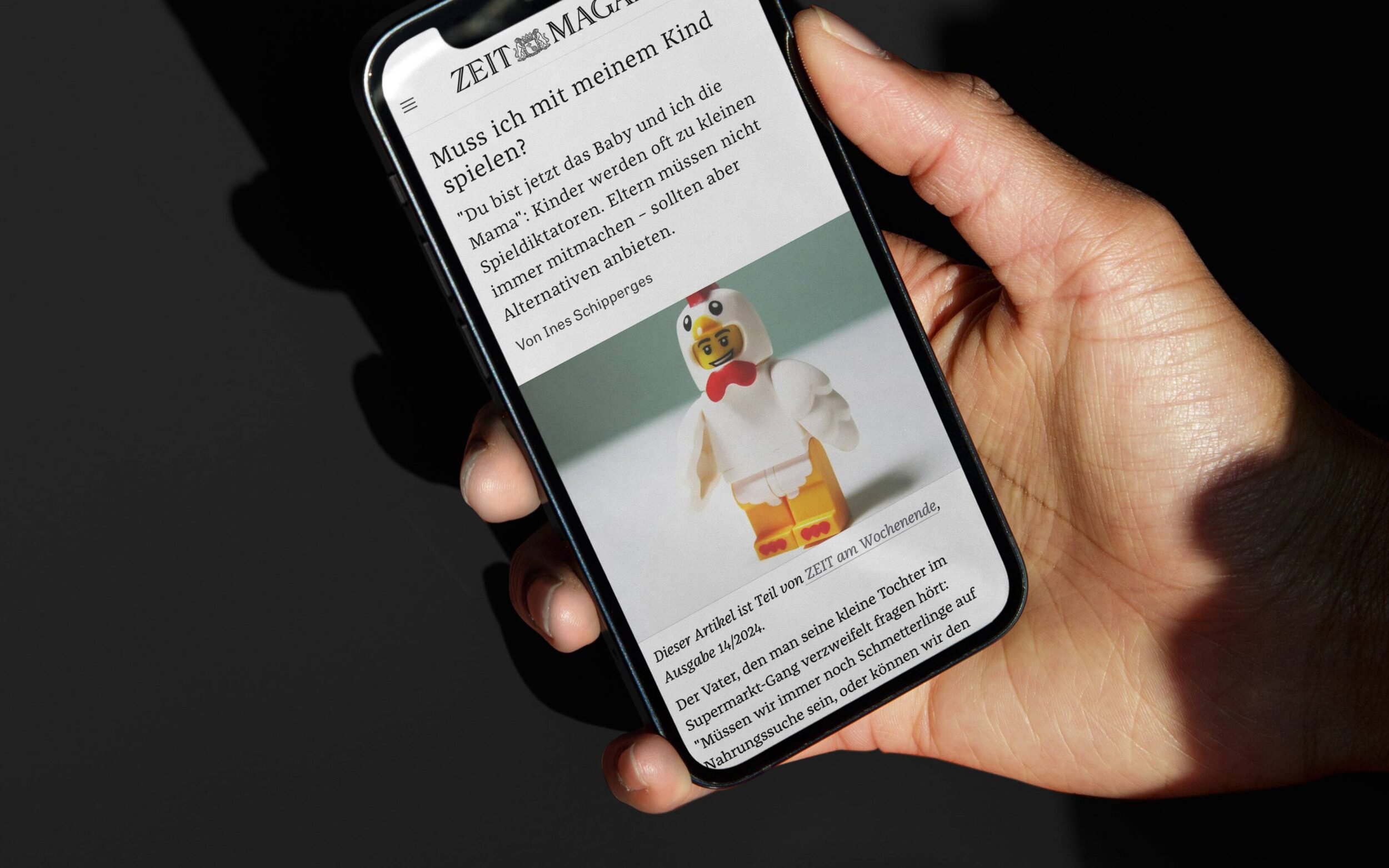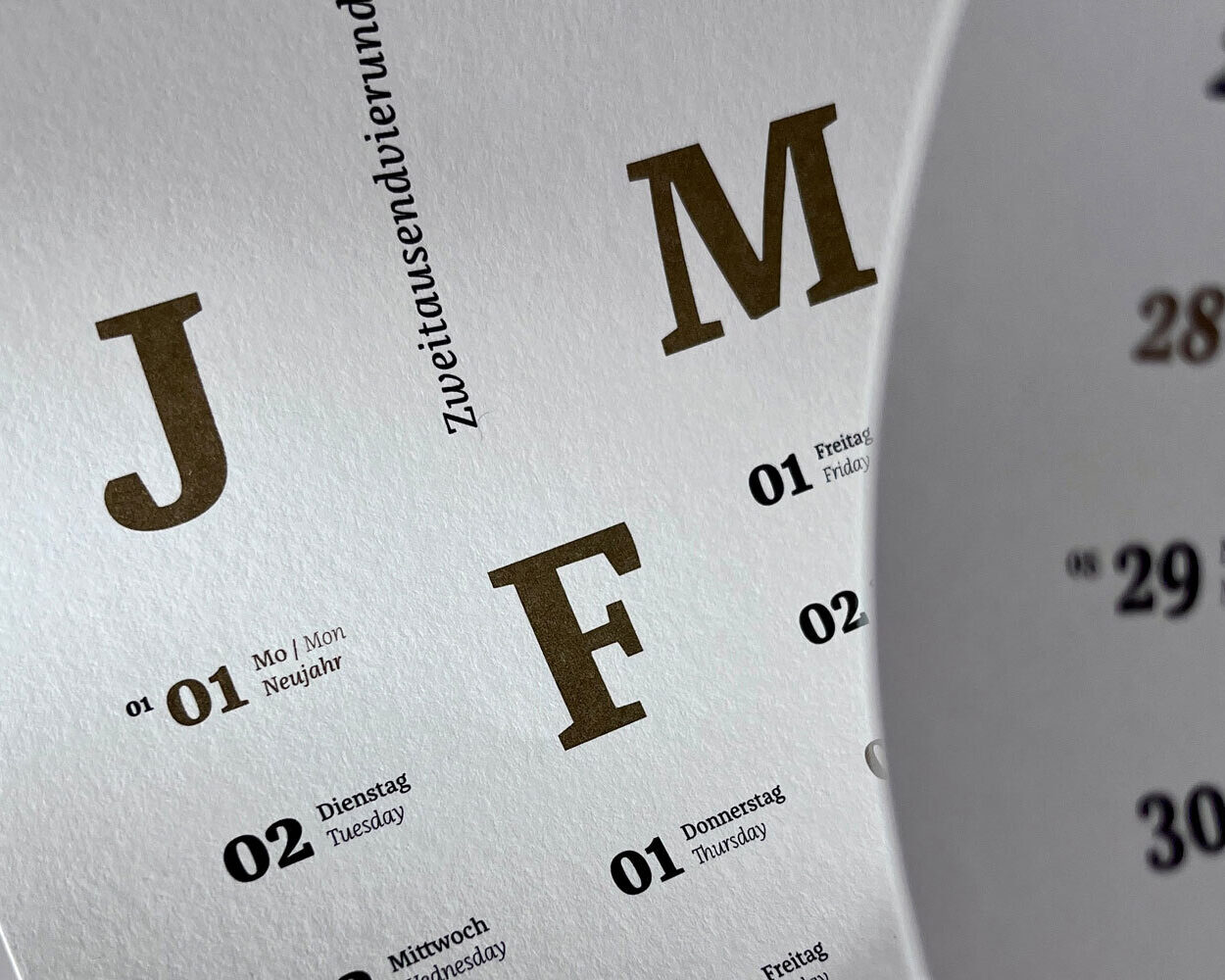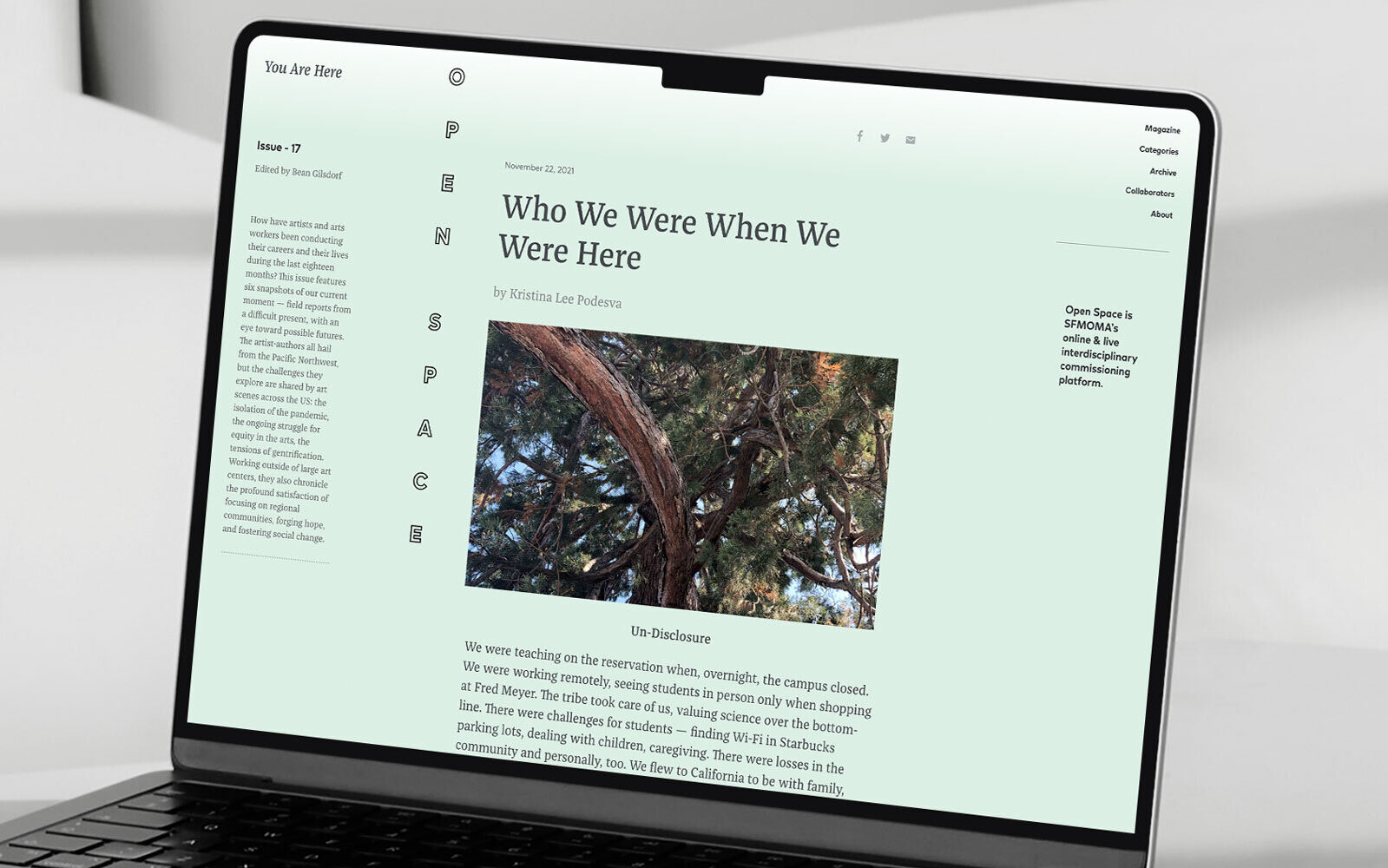Starting
€ 50.00
Single style from
€ 50.00
Complete family from € 400.00
Try
Buy
Complete family from € 400.00
Franziska Variable
Franziska
Franziska
Strong in character, robust and with passion for detail.
Franziska
The Delicate Dance of Details
Franziska
¶ Für lange Zeit, vom 15. bis Mitte des 18. Jahrhunderts, war die Antiqua das zentrale Schriftmodell für gedruckte Schrift. Unter Einfluss des Klassizismus wurden die Zeichenformen konstruierter und der Kontrast in den Strichstärken erhöhte sich (☞ ➁.➂.❶, S. 15) . Nichtsdestotrotz waren die Schriftentwürfe vor dem 19. Jahrhundert beinahe ausschließlich auf den Buchdruck ausgerichtet und wurden daher für Textgrößen geschnitten und in diesen verwendet. Erst »durch die Industrielle Revolution vergrößerte sich der typografische Markt beträchtlich. Die Unternehmer forderten von den Druckern größere, fettere und auffallende Schriften für ihre Werbung.«⁶⁸
¶ Die erste Schrift dieser Art wurde 1817 vom englischen Schriftenschneider Vincent Figgins (1766–1844) entworfen. Der Entwerfer selbst taufte sein Versalalphabet⁶⁹ noch Antique, der von ihm begonnene neue Schriftstil wird heute jedoch als Egyptienne⁷⁰ bezeichnet und charakterisiert sich durch eine starke Betonung der Serifen und einem sehr geringen Strichstärkenkontrast. ➵ Abb.²⁴
¶ Die erste Schrift dieser Art wurde 1817 vom englischen Schriftenschneider Vincent Figgins (1766–1844) entworfen. Der Entwerfer selbst taufte sein Versalalphabet⁶⁹ noch Antique, der von ihm begonnene neue Schriftstil wird heute jedoch als Egyptienne⁷⁰ bezeichnet und charakterisiert sich durch eine starke Betonung der Serifen und einem sehr geringen Strichstärkenkontrast. ➵ Abb.²⁴
Franziska
Riso ink, dès 1954
↪ MF9450: 60 bis 350 g
Franziska Variable
❞MACRO, MICRO, TYPE!❝
